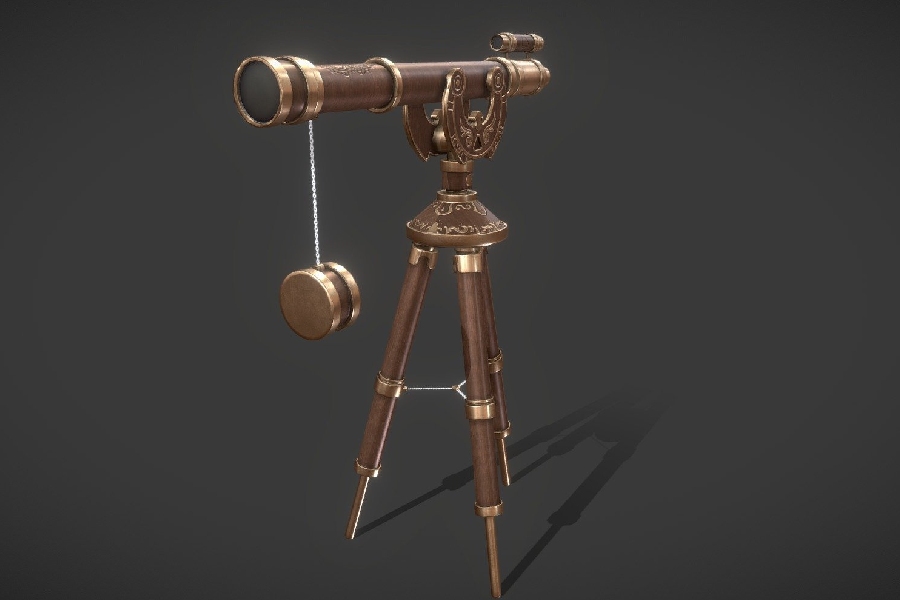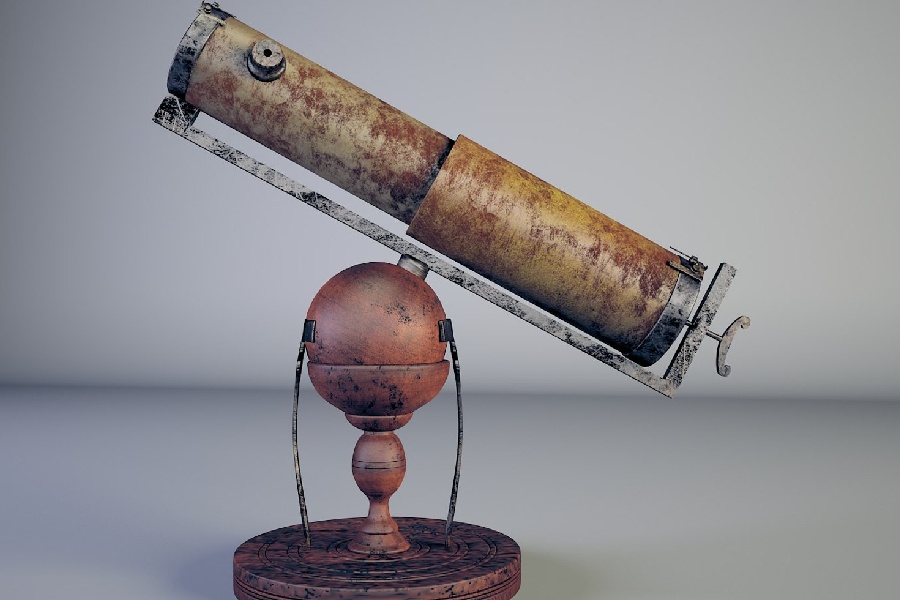Among the astronomical instruments rests a venerable elder. This instrument is known as the refracting telescope. So, what exactly are refracting telescopes? What lies behind their glassy gaze that has captivated stargazers for centuries? Since Galileo first elevated one skyward.
Unlike the reflective telescopes of giant observatories, what makes refractors shine involves mastering light itself through a precise optical dance.
Stay with us as we demystify the science behind refracting telescopes and explore the different types of refracting telescopes. Understanding refractors’ mechanics helps in making sensible selections. Choosing the right telescope opens the door to reveling in sparkling scenes among the stars.

What are Refracting Telescopes?
A refracting telescope utilizes lenses to gather distant light and focus it into an image, which is then magnified by an eyepiece for viewing. How does a refracting telescope work, you may ask?
It works using an objective lens at the front to focus the light and an eyepiece lens at the back that magnifies the projected image, like a magnifying glass.
The key components are the objective lens, which determines light-gathering ability and image resolution, and the eyepiece lens, which determines magnification. However, the size of objective lenses is constrained by weight, cost, and optical aberrations like chromatic aberration.
This limits light-gathering capability and resolution. While special lens designs can reduce aberrations, these practical factors cap the performance of refactors for professional applications. Still, their ease of use and fine views make them popular with amateur astronomers.
Brief History of Refracting Telescopes
Refracting telescopes utilize lenses to gather and focus light from distant objects to produce magnified images. The basic components include an objective lens at the front to collect and focus the light and an eyepiece lens that acts as a magnifier for the projected image.
The first manufactured lenses appeared in the 13th century, with early optical devices and telescopes consisting of very simple convex lenses.
In the early 1600s, Galileo significantly improved telescope design by using a convex objective and concave eyepiece configuration, allowing for magnifications of close to 30x. This enabled key early astronomical observations, such as noticing craters and peaks on the moon.
So, what type of image is formed by a refracting telescope? Refracting telescopes produce an inverted image as light rays cross over within the tube before reaching the eyepiece. This is why tertiary lenses are sometimes added to correct the image orientation.
Importance and impact of refractors in astronomy
The refracting telescope uses lenses to form images of astronomical objects. Refracting telescopes played an integral role in early observational astronomy and studies of the cosmos.
Galileo’s early optical instrument allowed the detection of lunar craters and Venusian phases, providing evidence for a non-geocentric solar system. Later applications included Huygens’ discovery of Saturn’s moon Titan in 1655 and observational support for Copernicus’ model of a Sun-centred solar system.
The quality and growing size of objectives also enabled the measurement of stellar positions and the discovery of new stars, planets, and moons. Developments in lens making and aberration corrections opened the door for larger apertures.
Achromatic lens elements reduced the chromatic aberration, whereby different wavelengths focus at different points. This allowed clearer telescopic views and larger diameter objectives. Modern apo-chromatic lenses provide further enhancements.
Limitations posed by today’s refracting telescopes
Modern refractors remain valued for crisp and sharp views well suited to visual observation. While relatively portable and easy to use.
The maximum diameter of objective lenses poses a limit to light-gathering capacity, which impacts performance for astronomical photography and applications compared to reflecting telescopes. However, refractors continue to play a key role in amateur astronomy for observation of the moon, planets, binary stars, and more.
Types of Refracting Telescopes
Galilean telescope
Historical origins
Galileo made advances in telescope design in the 1600s. He used a convex objective lens and a concave eyepiece. This was an improvement over early telescopes made with just one convex lens. Galileo’s telescope could achieve 30x magnification.
The Galilean telescope evolved from very early optical devices. It was a major step forward in astronomical telescope capabilities during their era, which boosted early astronomy research.
Characteristics and components
Galilean telescopes have simple lens components. There is a convex objective lens and a concave eyepiece lens. The eyepiece produces a non-inverted, erect image. Galilean telescopes have relatively long focal lengths in short tubes. This makes them compact devices.
The short tube and lens combination determines magnification and image characteristics. Galilean telescopes can provide useful low-power magnification in basic portable packages.
Advantages of the Galilean telescopes
| Advantages | Disadvantages |
| Simple design | Narrow fields of view constrain the ability to observe wider celestial objects |
| Compact, lightweight, and portable for field use | Chromatic aberration can reduce image sharpness due to basic objective |
| Low-cost | Spherical aberration also degrades images off the optical axis |
| Upright non-inverted images without additional correction optics |

Newtonian Telescope
Historical origins
Isaac Newton greatly contributed to the creation of refracting telescopes. His significant invention was using mirrors instead of lenses in his designs, which reduced the issues previously seen in refractors. New reflector telescopes bore Newton’s name – Newtonian telescopes.
Over time, innovations made these particular telescopes very popular and common. Mirror grinding improved reflectivity and precision, while mounts kept images steady during earth rotation. Enhanced stability and views boosted adoption.
Characteristics and components
Newtonians use parabolic primary mirrors to collect light. Light reflects to a flat secondary diagonal mirror. Light gets directed to an eyepiece for magnification.
Newtonian tube lengths can vary. But they are more compact than early reflectors with eyepieces mounted on the side of the tube body. The rotation capability of the eyepiece also enabled convenient viewing positions.
| Advantages | Disadvantages |
| Simple optical design | Open tube allows dust to land on mirrors, degrading image quality over time |
| Compact tube design takes up less space than early reflectors | Mirror alignments need periodic adjustment (collimation) |
| Effective on-axis reflecting optics in a small package | Diffraction from secondary mirror support spider reduces image sharpness |
| Affordable | Requires more equipment like finder scope and mount to operate |
| Overcomes limitations of refractors for light-gathering power |
Achromatic Telescope
Historical origins
Chromatic aberration limited early refractors. Different wavelengths focus at different points, which causes color fringing and reduced clarity.
In the 1730s, Chester Moore Hall created the first achromatic lenses. These combined crown and flint glass to align colors better. John Dollond later patented and produced achromatic telescope objectives commercially in 1758.
Advancements expanded this concept using extra elements. This enabled larger diameter objectives with good color correction.
Characteristics and Components
Using dual-element objectives, achromats align blue and red light with crown and flint glass types. This minimizes color distortion and improves image focus across the visible range.
Mechanically, achromatic refractors resemble basic refractors in layout. However, the multi-element objectives posed production challenges requiring skilled opticians.
| Advantages | Disadvantages |
| Wider spectral focusing improves image sharpness | More complex and heavier objectives |
| Allows for larger diameter objectives to collect more light | Residual color errors still present |
| Good balance of color correction and cost | Generally more expensive than simple crown refractors |
| Useful for visual and astrophotography applications |
Apochromatic Telescope
Historical origins
Though achromats addressed color aberration partly, residual errors persisted, and further refinements were needed for optimal sharpness.
In the 1880s, new optical glass types emerged. Fluorite and exotic glass mix better aligned light wavelengths. Objectives using 3+ elements provided superior color correction – dubbed apochromatic.
Despite the complexity, large aperture apos emerged in the 1900s. These became well suited for photography and science, like tracking asteroids and comets positionally.
Characteristics and components
Apochromatic utilizes complex multi-element objectives with exotic glass types like fluorite. Computer-assisted lens optimization reduces chromatic aberration greatly.
Mechanically, they resemble basic refractors. However, weight and precision requirements are higher, given many specialized lens elements. Stable mounts are essential to exploit their fine optics.
| Advantages | Disadvantages |
| Superb color correction and light focusing | Complex and costly optics to fabricate |
| Enables best telescopic visual and imaging performance | Demands ultra steady tracking mounts |
| Reveals finer levels of astronomical detail | Residual aberrations are still present |
Conclusion
For many fledgling stargazers, a dependable refractor often sparks and cultures an enduring passion for the heavens above.
Finally, what are refracting telescopes, and how do they magnify the images? Refracting telescopes utilize lenses to gather light from celestial objects and magnify the images for observation. As we have explored, they come in different variants– from the simple Galilean to more complex achromatic and apochromatic designs to overcome issues like chromatic aberration.
